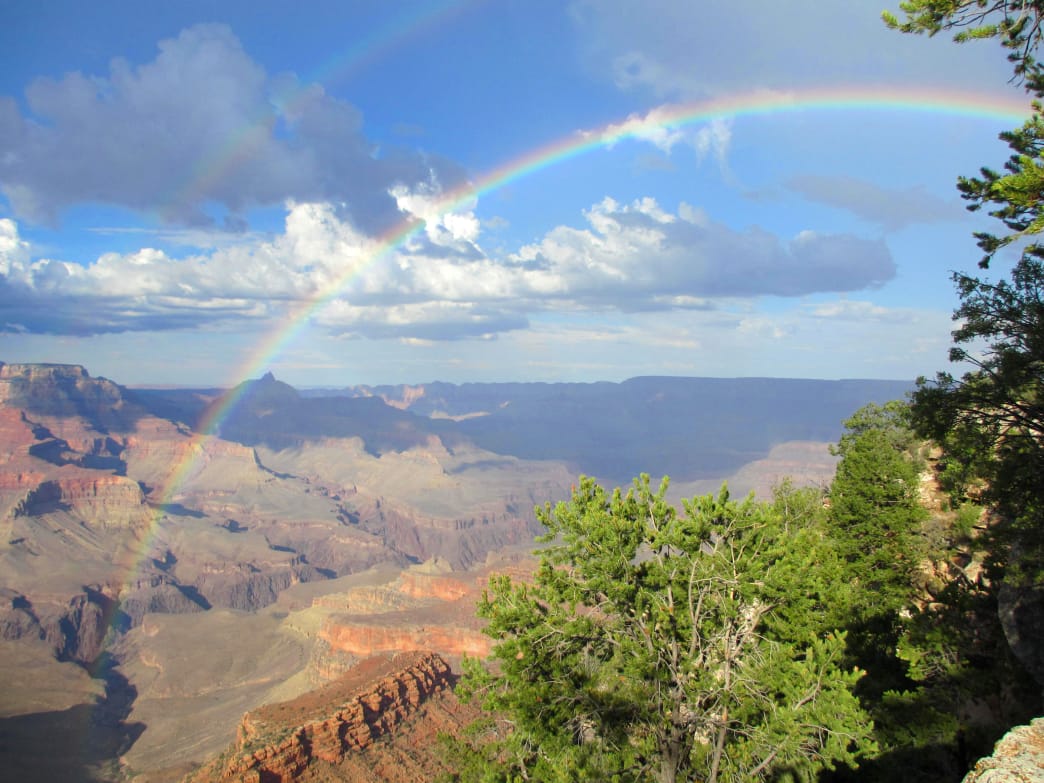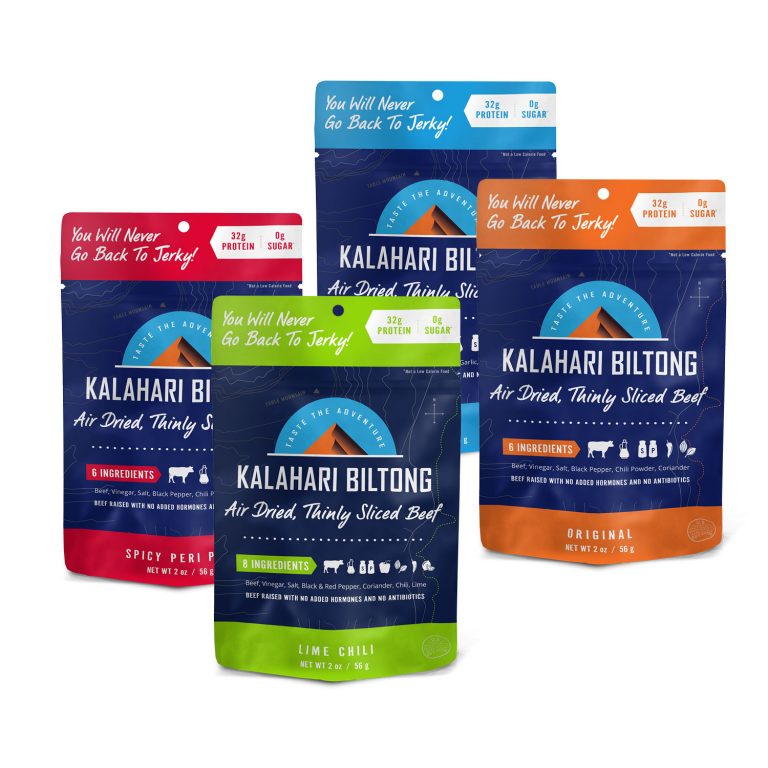Grand Canyon National Park provides sweeping views of a canyon that is 18 miles wide, one mile deep, and 277 river-miles long. Once you’re able to get past its massive size, there are the gorgeous red, orange, and brown rock layers to take in. This park, located in northern Arizona, was deemed a federal forest reserve in 1893 and established as a national park in 1919.
At the park, which has entry points along the South Rim and North Rim, you can see more than 90 species of mammals, including mountain lions, big-horned sheep, mule deer, and bats. The canyon rim is between 7,000 and 8,000 feet above sea level and the summer time means extremely hot days and cool nights.

Classic Adventures
The majority of recreational activities are accessible from the popular South Rim, located about 70 miles north of Flagstaff, Arizona.
The 6-mile, out-and-back South Kaibab Trail takes hikers on a tour of the Grand Canyon’s many rock layers, including red and gold limestone and grey shale. The trailhead is located off Yaki Point Road and is only accessible by shuttle bus — no private vehicles allowed (though mules are). This trail has a steep elevation change from start to finish (about 1,500 feet) so give yourself extra time on the way back from Skeleton Point, which offers incredible panoramic views of the canyon and its many buttes.
For a moderately strenuous backpacking trip, consider Grandview Trail. This 6-mile round trip route is steeped in history, as it was used in the late 1890s as a mule path for miners in search of copper. This steep cobblestone route has many switchbacks and ends at Horseshoe Mesa, a camping area located 2,500 feet below the canyon rim.
The 1-mile Cliff Springs Trail is great for hikers who are short on time. This mostly flat route, located on the canyon’s North Rim, takes hikers through a wooded area, past a Puebloan granary and under a cliff overhang.
An easy jaunt along Hermit Road is a great way to see many canyon overlook points. Take a shuttle to Hermit’s Rest, the westernmost point of the road, and walk back to Grand Canyon Village, a roughly 7-mile trip on pavement. There are restrooms located at various points along the way.

Secrets of the Park
Though the vast majority of people enter Grand Canyon National Park from the South Rim entrance, the North Rim has its perks, too.
Without the crowds, it’s calm, peaceful, and has some great hikes.
Though all of the Grand Canyon is located in Arizona, the North Rim is frequently described as being on the “Utah” side of the park. To get to the North Rim, you’ll need to travel 44 miles south of Jacob Lake, Arizona., not far from the Utah border.
If you’re looking for a short day hike, make the 6-mile out-and-back trip on the North Kaibab Trail to Roaring Springs , a waterfall surrounded by green moss and fern and red stone that provides drinking water for all of the park.

At 10 miles roundtrip, the Widforss Trail on the North Rim is a manageable day hike with a lot of shade and level ground. Along the way you’ll walk through a meadow, traverse through a forest and see million-year-old fossils. You may be accompanied by large dark squirrels with bushy white tails, known as Kaibab squirrels.
See the canyon in a totally different way — on the back of a mule. One guided trip takes riders down the Bright Angel Trail and across the Colorado River to Phantom Ranch, the only lodging below the canyon’s rim. Stay one or two nights at the ranch before returning by mule up the South Kaibab Trail.
Located just outside of the park in the Kaibab National Forest, the singletrack Rainbow Rim Trail offers sweeping views into the Grand Canyon from the North Rim. There are five overlook points that make for great primitive camping spots on this remote 18-mile trail.
Immerse Yourself
A multi-day rafting trip is a great way to fully grasp the immense beauty of the Grand Canyon.

A number of private companies offer multi-day rafting trips through the park ranging from three to 18 days from April to October. If you’re experienced at navigating highly technical waters, you can also apply for a non-commercial river permit via a lottery. Be warned, the wait for these permits can take years!
On a guided trip, you’ll get the choice between motorized and non-motorized boats. For a truly immersive experience, consider a dory trip in the lower canyon, which begins on the canyon’s South Rim with a 9.5 hike down the Bright Angel Trail.
A week-long trip in a dory from Bright Angel Beach to Whitmore Wash will take you down 100 miles of river with 19 major rapids rated 5 or above on a 1-10 rating scale.
For a truly immersive backpacking experience, consider hiking the full North Kaibab Trail. This 28-mile round trip trail begins nearly 1,000 feet higher than South Rim trails at 8,241 feet, so prepare for the altitude.
Along this route, you’ll see fir and aspen trees, ferns and wildflowers, as well as desert and riparian vegetation.
It’s extremely steep and includes a number of switchbacks, as well as long stretches where the trail has been blasted out of the cliff into a half tunnel. Consider this a backpacking expedition with an overnight stop at the Bright Angel Campground (you’ll need a backcountry permit from the park for this).
How to Get the Most Out of Your Visit
- If you’re hiking long distances or near the bottom of the canyon, prepare for intense temperatures of 100 degrees or above. During the summer months, daytime highs can reach 120 degrees. Hike at dawn or dusk to stay cool.
- Bring loads of water. Sounds simple, but it’s an easy mistake to make for this high altitude, dry desert climate.
- Consider visiting in early spring or late fall. Smaller crowds and less extreme weather (it also gets cold at the Grand Canyon in the winter).
- If you’re hiking down into the canyon, prepare to spend more time on the return ascent than on the initial descent. If you expect a hike to take three hours, give yourself one hour for the descent and two hours for the return ascent.
- Mules have the right of way. Many Grand Canyon trails are shared, so step off the trail on the uphill side to make way for these pack animals. Stand still and remain quiet until the last mule is 50 feet past your position.
- Use an animal-proof food storage container when backpacking. Also pack your sunscreen, toothpaste and lotion in animal-proof containers. Ravens, rock squirrels and deer mice are aggressive at this park.
Written by Sarah Kuta for RootsRated and legally licensed through the Matcha publisher network. Please direct all licensing questions to legal@getmatcha.com.
Featured image provided by Grand Canyon National Park

















